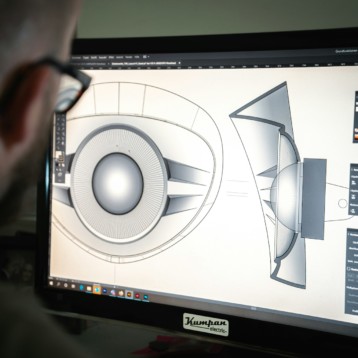|
A team of physicists led by Yulin Chen and Zhi-Xun Shen established the special behavior of electrons through a compound called bismuth telluride. The results reveal the electron’s characteristic with a clear signature from a topological insulator.
The project started with researchers identifying several bismuth and antimony compounds with unique properties. In recent months, Stanford Institute for Materials and Energy Science (SIMES) theorist Shoucheng Zhang and colleagues predicted that several bismuth and antimony compounds could behave as topological insulators at room-temperature.
The researchers at SLAC utilized the assumptions of Zhang and experimented with bismuth telluride samples using special X-rays. The results of the experiment showed that bismuth telluride was a clear signature of a topological insulator and was better as a topological insulator than was previously predicted in theory.
“The theorists were very close,” Chen said, “but there was a quantitative difference.” The difference lies in the operating temperature of the material. It was found that bismuth telluride could work at temperatures much higher than room temperature and of what theorists had estimated. “This means that the material is closer to application than we thought,” added Chen.
The material can then be applied to real world applications by aligning the quantum spin of each electron with the electron’s motion. This process is called quantum spin Hall effect. The alignment process creates spintronic devices, which scientists claim to be the replacement for standard semiconductor electronics.
|
When a topological insulator material is hit by electrons, scattering usually occurs. However, in the quantum spin Hall effect there is no resultant effect and thus electrons in the material flow without resistance. Then, if voltage is added to the material, the spin current will flow without heating the material. Since the material does not have resistance, it generates no heat.
“This could lead to new applications of spintronics, or using the electron spin to carry information,” explained theorist Xiaoliang Qi. “Whether or not it can build better wires, I’m optimistic it can lead to new devices, transistors, and spintronics devices.”
TFOT has previously written about how to detect photon entanglement where quantum uncertainty relations can be employed to recognize entangled states of light through a small number of computations. You can also read more on another graphene-based insulator named graphane (with an “a”), which according to the scientists could enable the development of cheap advanced transistors for the next generation of electronic devices. TFOT also covered quantum cat’s ‘whiskers’ that harness the sensitivity of quantum fields to measure incredibly weak magnetic fields.
Additional information on topological insulators can be obtained at Stanford University’s website.
Icon image credit: Wikimedia Commons nDevilTV












